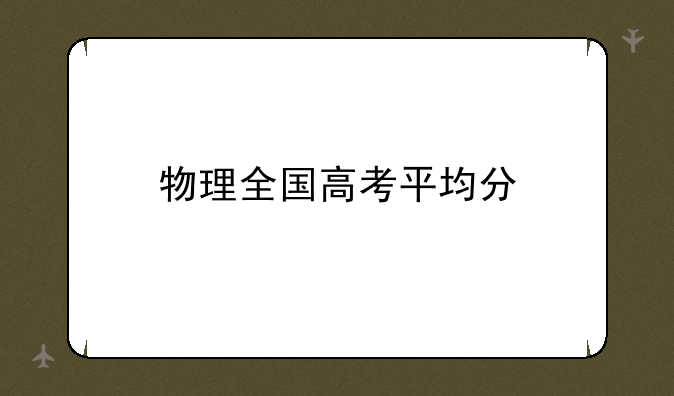英语四级试卷的分值是如何分布的?也就是说各个题多少分?
周记考试网带你了解英语四级考试试卷 ,希望本文能帮到你。
- 1、英语四级试卷的分值是如何分布的?也就是说各个题多少分?
- 2、英语四级考试中的试卷A和B有什么区别?
- 3、2019年大学英语四级听力考试题(1-3)
周记考试网小编整理了以下关于 [] 一些相关资讯,欢迎阅读!
英语四级试卷的分值是如何分布的?也就是说各个题多少分?

英语四级考试试卷分数分配
英语四级考试试卷构成就所测试的语言能力而言,试点阶段的四级考试由以下四个部分构成:1)听力理解;2)阅读理解;3)完型填空或改错;4)写作和翻译。
听力理解部分分值比例为35%;其中听力对话15%,听力短文20%。听力对话部分包括短对话和长对话的听力理解;听力短文部分包括选择题型的短文理解和复合式听写。
阅读理解部分分值比例为35%;其中仔细阅读部分(Reading in Depth)25%,快速阅读部分(Skimming and Scanning)10%。仔细阅读部分分为:a)选择题型的篇章阅读理解;b)篇章层次的词汇理解(Banked Cloze)或短句问答(Short Answer Questions)。快速阅读理解部分测试的是浏览阅读和查读能力。
完型填空或改错部分分值比例为10%。完型填空部分采用多项选择题型,改错部分的要求是辨认错误并改正。
写作和翻译部分分值比例为20%;其中写作部分(Writing)15%,翻译部分(Translation)5%。写作的体裁包括议论文、说明文、应用文等;翻译部分测试的是句子、短语或常用表达层次上的中译英能力。
具体比例搭配如下:
作文15%(有14分、12分、8分、6分、2分和0分四个档次,用时30分钟)
快速阅读10%(7个判断题每个1%,3个填空题也是1%,单词拼写错误不给分,用时15分钟)
听力35%(短对话8个,每个1%,长对话8个,每个1%,短文10个,每个1%,填词7个,每个0.5%,3个句子分别为2%,2%,2.5%。用时35分钟)
篇章阅读20%+词汇阅读5%(传统阅读10个,一个2%,选词阅读10%,一个0.5%。用时25分钟)
完型填空10%(20个小题,一题0.5%。用时15分钟)
翻译5%(一题1%。用时5分钟)
试点阶段的四级考试各部分测试内容、题型和所占分值比例如表1所示:
表1:试点阶段的四级考试各部分测试内容、题型和所占分值比例
试卷构成 测试内容 测试题型 比例
听力理解 听力对话 短对话 多项选择 35%
长对话 多项选择
听力短文 短文理解 多项选择
多项选择 复合式听写
阅读理解 仔细阅读理解 篇章阅读理解 多项选择 35%
篇章词汇理解 选词填空
快速阅读理解 是非判断+句子填空或其他
完型填空 或 改错 完型填空 或 改错 多项选择或错误辨认并改正 10%
写作和翻译 写作 短文写作 20%
翻译 中译英
一、听力理解(35%,共249分);
二、阅读理解(35%,共249分);
三、综合测试(15%,共106分);
四、写作(15%,共106分).
来自:
英语四级考试中的试卷A和B有什么区别?
A和B的区别在于,作答的方式不同。A是水平或垂直地画,B以防止抄袭。
一般来说,高校标准化期末考试试卷必须有AB卷、参考答案和评分表,两种类型的试卷都必须有专门的推荐人和评阅人,并附有相应的审核报告。AB卷成绩相同,难度相近。通常,只启用卷A,而不同时启用卷AB。也就是说,AB不是用来防止作弊的。
这是因为期末考试总会有学生申请延期,所以可以选择另一个时间使用B卷,此外,还有一个非常罕见的情况,当发生重大事故,如问题释放、不可抗力等情况时,可以重新测试并完全使用B卷。
对于这两套试卷,命题要求同一题目不得超过一定比例,如30%;试题难度和题型相似;在所有考试结束前分类;等等。
英语四六级考试是教育部主管的一项全国性的英语考试,其目的是对大学生的实际英语能力进行客观、准确的测量,为大学英语教学提供测评服务。大学英语考试是一项大规模标准化考试,是一个“标准关联的常模参照测验”。
大学英语四、六级考试作为一项全国性的教学考试由“国家教育部高教司”主办,分为四级考试(CET-4) 和六级考试(CET-6),每年各举行两次,分别在同一天的上午和下午进行。从2005年1月起,成绩满分为710分,由国家教育部高教司委托“全国大学英语四六级考试委员会”给每位考生发成绩单。
2013年12月考次起,全国大学英语四、六级考试委员会对四、六级考试的试卷结构和测试题型作局部调整。调整后,四级和六级的试卷结构和测试题型相同。为了适应新的形势下社会对大学生英语听力能力需求的变化,进一步提高听力测试的效度,全国大学英语四、六级考试委员会自2016年6月考试起将对四、六级考试的听力试题作局部调整 。
2019年大学英语四级听力考试题(1-3)
2019年大学英语四级听力考试题(2)
Section A
1.
A) She will go purchase the gift herself.
B) The gift should not be too expensive.
C) The man is not good at balancing his budget.
D) They are going to Jane’s house-warming party.
2.
A) It takes patience to go through the statistics.
B) He has prepared the statistics for the woman.
C) The woman should take a course in statistics.
D) He is quite willing to give the woman a hand.
3.
A) The man wants to make some change in the scripts.
B) The woman does not take the recording seriously.
C) They cannot begin their recording right away.
D) Page 55 is missing from the woman’s scripts.
4.
A) A significant event in July.
B) Preparations for a wedding.
C) The date of Carl’s wedding.
D) The birthday of Carl’s bride.
5.
A) The man was in charge of scheduling meetings.
B) The man was absent from the weekly meeting.
C) They woman was annoyed at the man’s excuse.
D) The woman forgot to tell the man in advance.
6.
A) The woman is a marvelous cook.
B) The man cannot wait for his meal.
C) The woman has just bought an oven.
D) The man has to leave in half an hour.
7.
A) Whether the man can keep his job.
B) Where the man got the bad news.
C) What items sell well in the store.
D) How she can best help the man.
8.
A) The woman can sign up for a swimming class.
B) He works in the physical education department.
C) The woman has the potential to swim like a fish.
D) He would like to teach the woman how to swim.
Questions 9 to 11 are based on the conversation you have just heard.
9.
A) He teaches in a law school.
B) He loves classical music.
C) He is a diplomat.
D) He is a wonderful lecturer.
10.
A) Went to see a play.
B) Watched a soccer game.
C) Took some photos.
D) Attended a dance.
11.
A) She decided to get married in three years.
B) Her mother objected to Eric’s flying lessons.
C) She insisted that Eric pursue graduate studies.
D) Her father said she could marry Eric right away.
Questions 12 to 15 are based on the conversation you have just heard.
12.
A) Editor.
B) Teacher.
C) Journalist.
D) Typist.
13.
A) The beautiful Amazon rainforests.
B) A new railway under construction.
C) Big changes in the Amazon valley.
D) Some newly discovered scenic spot.
14.
A) In news weeklies.
B) In newspapers’ Sunday editions.
C) In a local evening paper.
D) In overseas editions of U.S. magazines.
15.
A) To be employed by a newspaper.
B) To become a professional writer.
C) To sell her articles to news service.
D) To get her life story published soon.
Section B
Passage One
Questions 16 to 18 are based on the conversation you have just heard.
16.
A) Nodding one’s head.
B) Waving one’s hand.
C) Holding up the forefinger.
D) Turning the right thumb down.
17.
A) Looking away from them.
B) Forming a circle with fingers.
C) Bowing one’s head to them.
D) Waving or pointing to them.
18.
A) Looking one’s superior in the eye.
B) Keeping one’s arms folded while talking.
C) Showing the sole of one’s foot to a guest.
D) Using a lot of gestures during a conversation.
Passage Two
Questions 19 to 21 are based on the passage you have just heard.
19.
A) They had to beg for food after the harvest.
B) They grew wheat and corn on a small farm.
C) They shared a small flat with their relatives.
D) The children walked to school on dirt roads.
20.
A) Tour Ecuador’s Andes Mountains.
B) Earn an animal income of $2,800.
C) Purchase a plot to build a home on.
D) Send their children to school.
21.
A) The achievements of the Trickle Up Program.
B) A new worldwide economic revolution.
C) Different forms of assistance to the needy.
D) The life of poor people in developing countries.
Passage Three
Questions 22 to 25 are based on the passage you have just heard.
22.
A) They are highly sensitive to cold.
B) They are vitally important to our life.
C) They are a living part of our body.
D) They are a chief source of our pain.
23.
A) It has to be removed in time by a dentist.
B) It is a rare oral disease among old people.
C) It contains many nerves and blood vessels.
D) It is a sticky and colorless film on the teeth.
24.
A) It can change into acids causing damage to their outer covering.
B) It greatly reduces their resistance to the attacks of bacteria.
C) It makes their nerves and blood vessels more sensitive to acid food.
D) It combines with food particles to form a film on their surface.
25.
A) Food particles.
B) Gum disease.
C) Unhealthy living habits.
D) Chemical erosion.
Section C
Stunt people (替身演员) are not movie stars, but they are the hidden heroes of many movies.
They were around long before films. Even Shakespeare may have used them in fight scenes. To be good, a fight scene has to look real. Punches must __26__ enemies’jaws. Sword fights must be fought with __27__ swords. Several actors arc usually in a fight scene. Their moves must be set up so that no one gets hurt. It is almost like planning a dance performance.
If a movie scene is dangerous, stunt people usually __28__ the stars. You may think you see Tom Cruise running along the top of a train. But it is __29__ his stunt double. Stunt people must __30__ the stars they stand in for. Their height and build should be about the same. But when close-ups are needed, the film __31__ the star. Some stunt people __32__ in certain kinds of scenes. For instance, a stunt woman named Jan Davis does all kinds of jumps. She has leapt from planes and even off the top of a waterfall. Each jump required careful planning and expert __33__.
Yakima Canutt was a famous cowboy stunt man. Among other stunts, he could jump from a second story window onto a horse’s back. He __34__ the famous trick of sliding under a moving stagecoach. Canutt also __35__ a new way to make a punch look real. He was the only stunt man ever to get an Oscar.
答案
1.B
2.D
3.C
4.C
5.C
6.B
7.A
8.A
9.C
10.B
11.D
12.B
13.C
14.B
15.C
16.A
17.D
18.C
19.A
20.D
21.A
22.C
23.D
24.A
25.B
26. land on
27. sharp
28. fill in for
29. probably
30. resemble
31. focuses on
32. specialize
33. timing
34. invented
35. figured out
声明:本站所有文章资源内容,如无特殊说明或标注,均为采集网络资源。如若本站内容侵犯了原著者的合法权益,可联系本站删除。





